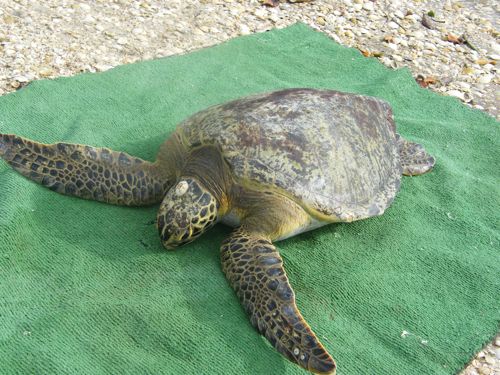Story and photos by Melissa Gaskill
This blog frequently covers travel that makes a difference – trips that incorporate volunteering, are culturally sensitive, support local businesses, and respect the human and natural environment – or all of the above. I wrote a guest post about such a trip about a year ago, Turtle Rescue on the Eco Side of Baja. More and more places, particularly in developing countries, see this kind of tourism as a sustainable way to protect sea turtles. At the 31st Symposium on Sea Turtle Biology and Conservation, held in San Diego April 12-16, several presentations reported on programs that have seen success, so I thought I’d share them here.
SEE Turtles, a US based non-profit, promotes travel that supports conservation, organizing its own trips to Baja California, Costa Rica and Trinidad.
“We know tourism can be bad for people and animals, especially when done in an unplanned and uncontrolled way,” director Brad Nahill told symposium attendees. “Or it can have positive impacts, including direct financing of conservation and research, reduced dependency on direct use of resources (such as eating sea turtle eggs), increased monitoring, and an increased local constituency. We use local businesses, share commissions, and do additional fundraising, education, volunteer recruiting, and advocacy.”
The organization uses detailed criteria for selecting trip sites, follows established guidelines for trip activities, and monitors trips to ensure they don’t have a negative effect. Locals are always involved either as guides, or as the source for provisions and souvenirs. Fees and donations go back into the community.

So far, Nahill reported, SEE Turtles has generated more than $230,000 for conservation and communities. At least 250 people have visited turtle sites, 1,000 volunteer shifts have been filled, and more than 15 million people have been reached with education and conservation messages. All of this, he pointed out, despite starting the program in a terrible economy. The organization helps programs tap into adventure travelers, volunteer tourists, domestic travelers, and day trippers. In addition to offering organized trips, it also will match up travelers with reputable sea turtle programs near almost any destination in the world.
Lindsey West reported on the efforts of Sea Sense, a small marine conservation organization protecting a small nesting population of green and hawksbills on Tanzania’s Mafia Island. This island contains two-thirds of all sea turtle nests in the country. The organization monitors six nesting sites, four within a marine park, conducting daily patrols and relocating nests at risk of tide inundation.
So far, it has trained 48 locals elected by their villages as conservation officers. Its nest incentive program pays a small stipend to anyone reporting the location of a nest to these conservation officers, and another small incentive when a nest successfully hatches. This program has reduced poaching from more than 80 percent to less than two. Half of the revenues generated by eco-tourism are directed into a village environmental fund, so the community sees direct benefit, West said.
That revenue also covers the cost of monthly allowances for monitors, field equipment, and nest incentives. Sea Sense is exploring the potential to expand sea turtle tourism by incorporating turtle experience into village tours, nature walks, and beach picnics. “We need long-term sustainability and decreased dependence on donations,” West said. Challenges the effort faces include very remote nesting beaches, plastic debris on beaches, the tour guides’ lack of confidence and skill, visitor expectations, cultural considerations, and communications.
Alarmed by the slaughter of turtles in northern Trinidad in the 1970s and 80s, the local communities of Grande Riviere, Matura Beach and Fishing Pond joined forces with Nature Seekers, assisted by the government’s Forestry Division, to protect nesting leatherbacks, hawksbill and green sea turtles. Some 5,000 turtles nest on a beach roughly a mile long here. The program offers guided educational turtle tours nightly March through August – and has carefully monitored and tested the potential effect of lights, photography, touching and the size of groups on the turtles. Its activities also include beach cleaning, sand turtle contests, and tagging and data collection, which are highly dependent on volunteers, often from Earthwatch. SEE Turtles brings groups here as well.
Locals in these communities have also been trained to create jewelry and other items from glass bottles that wash up on the beaches. This program raises funds for locals and sea turtle conservation and leaves the beach cleaner for turtles as well. Turtles tagged in Trinidad have been observed as far east as the Mediterranean and as far north as Nova Scotia, so Nature Seekers’ effects reach far beyond the Caribbean island.
Consider including one of these destinations and programs, or others like them, in your future travels. You’ll see a beautiful place, and do a beautiful thing – help save the sea turtles.
For more of Melissa Gaskill’s life-affirming stories and beautiful photography, visit her blog.



Leave a Reply